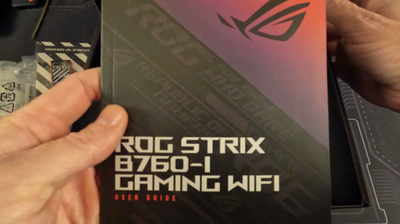
Using the ASUS ROG Strix B760-I Gaming WiFi 6E LGA 1700 Mini-ITX Motherboard (2024)
My thoughts on the ASUS ROG Strix B760-I Gaming WiFi 6E for Intel 13th Gen CPUs: design, performance, connectivity, value.
Introduction
I recently built a new PC and chose the ASUS ROG Strix B760-I Gaming WiFi 6E motherboard for its small size and wide range of features. I am quite interested in a compact system that doesn't sacrifice performance - this board suits this purpose very well.
Some photos (click to enlarge)
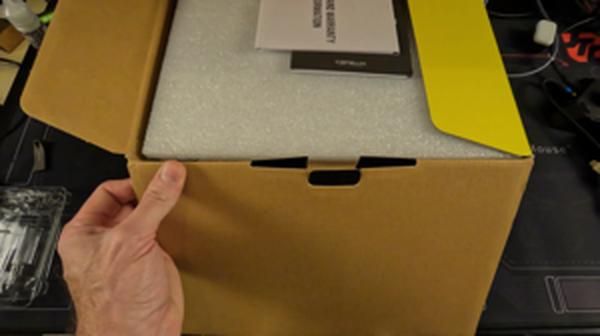
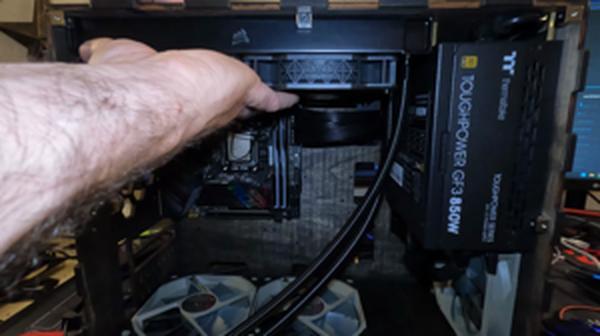
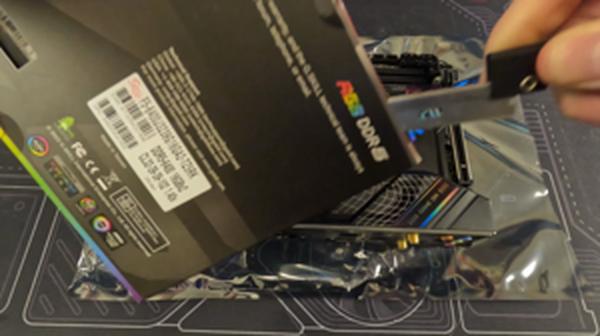
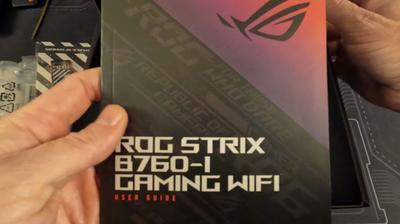
Specs of the ASUS ROG Strix B760-I Motherboard
- Release Year
- Brand
- Chipset Type
- Compatible Devices
- Cpu Model
- Cpu Socket
- Memory Clock Speed
- Model Name
- Platform
- Ram Memory Technology
- Motherboards-compatible-processors
Prices
Design and Build Quality of the ASUS ROG Strix B760-I Gaming WiFi 6E Motherboard

The ASUS ROG Strix B760-I Gaming WiFi 6E Motherboard is one I've had my eyes on for a while, mainly due to its reputation for being a mini-ITX board that doesn't skimp on features. When I got my hands on it, the design and build quality were among the first things I checked. Here's a quick rundown:
High-Quality Materials: The sturdy construction with premium alloys and capacitors provides peace of mind for durability.
Innovative Cooling: The skived-fin design and thick heatsinks paired with high-conductivity thermal pads promise efficient heat dissipation.
Compact Yet Feature-Rich: Despite its small form factor, it's loaded with all the necessary bells and whistles.
The overall look of the board is impressive—clean with a hint of that gamer aesthetic that ASUS ROG is known for. The RGB lighting is a nice touch, adding personality to compact builds without being overbearing. I especially appreciate how ASUS manages to integrate a powerful 8 + 1 power stage and ProCool power connectors within such a compact space. It gives me confidence that this board can handle high-performance CPUs without a hitch.
I've always been wary of thermal throttling in smaller builds, but the ROG Strix B760-I tackles that head-on. The motherboard's cooling strategy isn't just marketing fluff; it actually follows through with lower temperatures even under load, which is crucial for maintaining optimal performance.
However, it's not all perfect. The large VRM heatsink, while effective, can be a troublesome neighbor, especially when fitting larger CPU coolers or certain RAM modules. In my build, I had to opt for low-profile memory just to prevent clashes with my cooling solution. This is an important detail to consider if you have your heart set on a particular set of RAM.
Then there's the port placement. It was a bit of a juggle, considering the compact nature of the board. I would recommend plugging in cables before seating the board in the case. A little foresight goes a long way in avoiding frustration later.
On the brighter side, having dual M.2 slots is a godsend, offering ample room for storage without sacrificing precious space. I didn't have to compromise on speed or capacity, which is often a concern with smaller builds.
The WiFi 6E functionality is also noteworthy. It's robust and stable, saving me from the clutter of wires, especially since my setup is in the living room.
To sum up, the ASUS ROG Strix B760-I Gaming WiFi 6E Motherboard strikes an impressive balance between design, build quality, and space efficiency. It's not without its quirks, most of which stem from being an ITX board, but those are easily outweighed by its high-end features and reliable performance. For anyone serious about SFF (Small Form Factor) gaming or building a compact powerhouse, this is a motherboard worth considering.
Performance and Stability for Gaming and Intensive Tasks

As I set out to build a compact yet powerful gaming rig, the ASUS ROG Strix B760-I Gaming WiFi 6E motherboard piqued my interest for its promise of performance in a small form factor. Here's a real-world breakdown of its gaming and intensive task handling from my experience:
Performance Pros:
Efficient Power Delivery: The 8 + 1 power stages keep the system stable, even when pushing an Intel 13th Gen CPU.
Effective Cooling: Thick VRM heatsinks effectively dissipate heat, maintaining optimal temperatures during intense gaming sessions.
Future-Proof: With support for DDR5 RAM and PCIe 4.0, this motherboard is ready for next-gen upgrades.
Built-In WiFi 6E: Seamless and fast networking capabilities right out of the box, which is fantastic for online gaming.
Drawbacks:
BIOS and Driver Issues: The need to update BIOS and drivers can be daunting for newcomers, leading to initial frustrations.
Compatibility Concerns: Some users might find it tricky to fit certain components, like bulky air coolers, due to the compact design.
The motherboard has consistently delivered exceptional performance, handling high-end games without breaking a sweat. When pairing it with an Intel Core i5-13600K and a RTX 3060, the gaming experience is flawless, and everything runs buttery smooth. This is partly thanks to its robust power solution, which ensures that the processor runs efficiently even under load.
During multitasking and more demanding workloads, such as video editing and 3D rendering, the board stands its ground, confirming its suitability beyond just gaming. One thing to note, however, is the importance of keeping the BIOS updated. The latest BIOS version addresses some initial RAM speed issues, highlighting the necessity of these updates for optimal performance.
The built-in WiFi 6E is a boon for connectivity. It's both fast and reliable, which is more than I can say for some other motherboards I've tried. The days of worrying about additional WiFi adapters are now a thing of the past. That said, the installation process for the drivers could be more user-friendly. A smoother initial setup is something ASUS could improve upon.
While the compact size is a major advantage for space-conscious builds, it does come with a caveat. The tight spacing can pose challenges when installing larger components, like AIO pumps or certain air coolers. It's something to consider when choosing the rest of your build components.
In my personal setup, I've faced no issues with stability. The system boots up quickly, runs quietly, and stays cool even after hours of gaming. The WiFi 6E has given me a lag-free online experience, and the M.2 support equates to speedy game load times. Just be sure to have the right tools at hand for a smooth assembly, especially if opting for a smaller case.
While the ASUS ROG Strix B760-I isn't free of drawbacks, its advantages — mainly in performance and build quality — make it a solid choice for a mini-ITX build, especially for those looking to combine portability with power.
Connectivity Options and Expansion Capabilities

The ASUS ROG Strix B760-I Gaming WiFi 6E Motherboard packs an impressive array of connectivity options that cater well to a mini-ITX build. Here's a rundown of what caught my attention:
Onboard Intel Wi-Fi 6E ensures that I have the latest wireless connectivity, essential for seamless online gaming and streaming. It's a big plus when I don't have to deal with additional adapters taking up precious USB ports.
The Intel 2.5G Ethernet with ASUS LANGuard is a godsend for when I need that reliable, low-latency connection during intense gaming sessions. Having that extra speed over standard Gigabit connections is noticeable and appreciated.
Bluetooth 5.3 is a nice touch for all my peripherals, from game controllers to audio devices. I'm all about decluttering wires, and this motherboard keeps my setup neat.
There are two PCIe 4.0 M.2 slots for storage, which means I can have my boot drive and an additional high-speed storage drive running simultaneously. This makes for super-fast game loading times and minimal waiting around for file transfers.
However, it's not all perfect:
Space is at a premium on this board, and the second M.2 slot is at the back, which is not as convenient for upgrades or swaps.
With just one PCIe slot due to the form factor, I have to be very selective about my GPU choice. There's not much room for expansion here.
Despite the limitations inherent to the mini-ITX format, ASUS has done a considerable job squeezing in ample features to keep any gamer or power user happy. The enhanced VRM thermals are a testament to the robust design, helping to maintain performance without thermal throttling.
I did struggle with a few aspects, though. The large VRM heatsink can interfere with certain CPU coolers, and the limited USB headers posed a slight inconvenience when trying to connect multiple front-panel devices. Also, navigating the tight spaces for cable management is something to be aware of, which is easily overlooked by newcomers to SFF (small form factor) builds.
In terms of networking and expansion, the ASUS ROG Strix B760-I leaves little to be desired, especially in a mini-ITX package. It manages to strike that delicate balance between offering the latest tech and not overwhelming the compact build with unnecessary frills. The integration of Wi-Fi 6E and 2.5G Ethernet directly onto the board is impressive, and while I would have liked a few more USB headers or a little more room around the CPU socket, these are minor trade-offs in an otherwise well-rounded motherboard.
Value for Money and Overall Experience with the ASUS Mini-ITX Motherboard

In assessing the value for money and my overall experience with the ASUS ROG Strix B760-I Gaming WiFi 6E motherboard, let me lay out the factors I considered:
Price: Given its high-end features, the pricing feels justified, yet it sits in a competitive position against rivals.
Features: It's packed with enthusiast-level goodies, especially for a mini-ITX board, like WiFi 6E and dual M.2 slots.
Performance: It delivers strong performance that meets the needs of the majority of gamers and power users.
Build Quality: The durability and quality of materials are impressive, and it’s designed to last.
Ease of Use: From setup to operation, everything is user-friendly even for those without deep technical knowledge.
However, no product is without its downsides. Here are a few points where I felt the motherboard could improve:
Networking Driver Issues: The out-of-the-box experience with networking drivers was less than smooth, requiring additional steps to get online.
Size Constraints: Being a mini-ITX board, space is at a premium, and certain large components can be a tight fit.
POST Times: There's room for improvement with the POST times, which were a bit slow for an Intel setup.
In my hands-on time with it, I must say the experience mostly leans towards the positive. The performance and stability were spot on for gaming and heavy applications. I did run into some hiccups with networking drivers, but once over those hurdles, the system ran flawlessly. It's a relief that such a compact board doesn’t sacrifice on power or expansion capabilities.
Installation ease was a high point, too. The motherboard slotted into my build with minimal fuss. Detailed instructions meant that I was up and running fairly quickly, though it's worth mentioning that if you're a novice builder, that VRM heatsink size could surprise you.
On the topic of BIOS, I was pleased with the responsiveness of ASUS’s BIOS interface. The EZ Update feature proved to be a user-friendly way to keep the board's firmware at the leading edge. It's often overlooked by manufacturers, but a robust BIOS can be a lifesaver.
One thing to note, though, is that if you're into RGB lighting, you may want to orchestrate a ballet of third-party software like OpenRGB or iCUE, since the included Armoury Crate software can sometimes be a bit finicky.
So, is it a smart purchase? For anyone looking to build a powerful, space-saving system that doesn’t compromise on quality, features, or performance, the ASUS ROG Strix B760-I Gaming WiFi 6E motherboard is definitely worth the investment. The teething issues with the networking drivers and large air coolers are minor blotches on an otherwise stellar record. It strikes a good balance between advanced features and ease of use, earning my recommendation as a standout choice for anyone in the mini-ITX motherboard market.
Comments (0)
Share